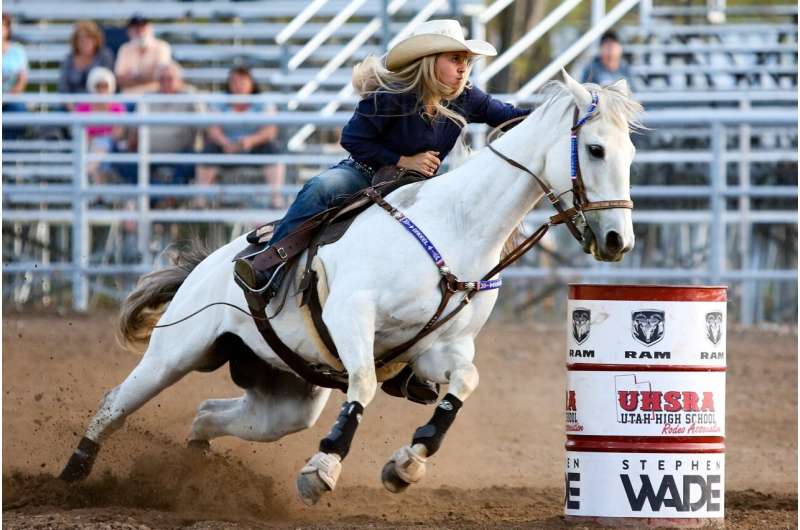This article has been reviewed according to Science X's editorial process and policies. Editors have highlighted the following attributes while ensuring the content's credibility:
fact-checked
trusted source
proofread
Rodeo sport safety: Injuries and prevention

It's time to giddy up for the Houston Livestock Show and Rodeo, where spectators watch cowboys and cowgirls in their respective rodeo sports. While rodeo athletes make their efforts look simple, rodeo is one of the most strenuous sports, that—like any sport—can lead to different injuries. A Baylor College of Medicine orthopedic trauma surgeon details safety measures in rodeo sport.
"You can get sprains or ligament tears, tendon injuries, breaks or fractures in bones in any sport," said Dr. Omar Atassi, assistant professor in the Joseph Barnhart Department of Orthopedic Surgery at Baylor. "Just because you don't hear about injuries in rodeo sport since it's not as common as something like pickleball doesn't mean it can't be dangerous. When an injury does occur in rodeo sport, it can be fairly significant."
The most common complaints are horse-related, according to Atassi, and these injuries could happen even to the weekend rider outside the rodeo arena. A horse might buck its head and hit the athlete's hand, potentially leading to a broken hand or sprained wrist. One might get thrown off their horse with their foot caught in the stirrup, causing an ankle sprain or break, a broken bone in the foot, or a torn ligament. In more severe cases, the horse could fall on the athlete, resulting in a pelvis fracture. These cases often present in the emergency room.
While surgeons aim for the least invasive way to treat patients, some injuries require surgery. A low-grade sprain or incomplete tear of the ligament usually heals without surgery. Treatment includes rest, ice, anti-inflammatory medications and physical therapy to regain strength and function. More severe injuries like a complete tear, a displaced break of a bone or dislocation of a joint might require surgery.
"Once you have the surgery, that can take you out of a whole season of rodeo sports, mostly because you go to physical therapy during that period to get your strength and coordination back," Atassi said.
Athletes in any sport often return to their sport before their prescribed recovery period ends because they feel prepared. While they might not reinjure the previously injured area, they often injure another part of the body because of the shorter recovery process.
"Patients think they can go back to their sport sooner since they can move easily, but that's not the right way to think of it because a lot of the recovery process is to develop your strength and coordination to prevent another injury. You have to make sure you're at 100 percent physical ability before you participate," he said.
Technique is crucial when trying a new sport or performing at a higher, professional level. Athletes who are new to the sport should work with a trainer who can properly guide them. Atassi notes that core strengthening and balance are key areas to avoid injury in rodeo sport or any sport.
He explains the contrast between getting into sports like pickleball versus rodeo: "Rodeo is so niche because it's strenuous, whereas pickleball is opposite because it's approachable. People who don't play sports are starting to play pickleball and injuring themselves because they're not ready for sport. Rodeo is no different, but people who get into it are likely more prepared since it involves an animal and is strenuous."
Atassi emphasizes the importance of stretching before and after any form of exercise or training to prevent muscle injury and aggravation of prior problems. After exercising, putting ice packs over joints that tend to ache or flare up might be helpful.





















